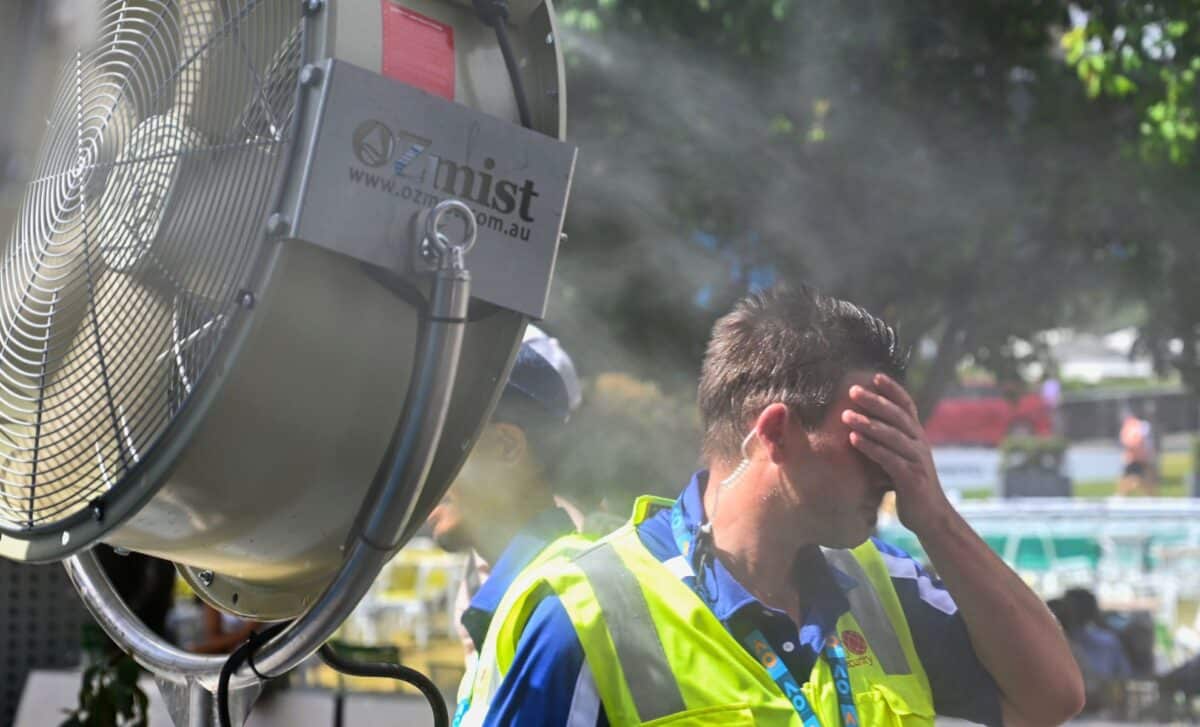Large parts of Australia are set to endure a prolonged heatwave over the coming days, with temperatures and humidity levels creating uncomfortable and potentially dangerous conditions. Key regions, including Perth and Brisbane, are bracing for days of elevated heat that meteorologists warn could stretch well above seasonal averages.
Temperatures Soar in Western Australia
Perth, already grappling with searing heat, will face daytime highs between 37°C and 39°C and unusually warm nights of 25°C to 26°C until Friday. These figures stand out against the city’s typical January averages of 31.4°C by day and 18.1°C at night.
The weather comes on the heels of an extreme day earlier this week, when temperatures in the metro area soared to 43.6°C. Meanwhile, Geraldton, 420 kilometers to the north, recorded a scorching 49.3°C, equaling its all-time high.
According to Miriam Bradbury, senior meteorologist at the Bureau of Meteorology, while new national temperature records are unlikely, the duration of the heatwave presents the most significant challenge. “It’s not just about the peaks but about how long these hot conditions persist, combined with really warm nights,” she said.
Brisbane and Queensland Face Heatwave Challenges
Brisbane will also experience high temperatures, with forecasts of 35°C on Wednesday and 37°C by Friday. The situation is exacerbated by humid overnight conditions, with lows expected to hover around 24°C. Bradbury explained that a slow-moving trough over inland Queensland and a high-pressure system to the south are drawing heat from central Australia and holding it over the region.
Humidity levels in coastal areas are projected to reach as high as 90% at night, creating an oppressive and lingering heat burden. Regions north and east of the Darling Downs will bear the brunt of this humidity, further amplifying discomfort during the overnight hours.
The Human Toll of Heatwaves
Experts, such as Griffith University’s Professor Susan Harris Rimmer, highlight the severe risks posed by heatwaves, which she equates in threat to bushfires and cyclones. Vulnerable populations—including infants, older adults, pregnant women, and those with specific medical conditions—are particularly at risk.
Harris Rimmer notes a troubling lack of awareness around the impact of heatwaves on pregnant individuals, despite the clear dangers to both mothers and their unborn children.
Outdoor workers, athletes, and individuals without permanent housing are among those most vulnerable. “People sleeping in cars or tents face serious risks,” she warned, advocating for better community heat strategies and accessible places of refuge for those without air conditioning.
Adapting to the New Normal
Australia’s heatwaves are intensifying in frequency and persistence, underscoring the need for a national rethink of summer strategies. Harris Rimmer emphasized that authorities and communities must develop long-term heat management systems, including targeted warnings for at-risk groups and infrastructure for cooling relief.
“This isn’t about preparing for future climates; this is the climate we already have,” she said. Acknowledging the stark realities of Australia’s evolving summers is now a critical step in ensuring public safety and resilience.









